The MIKI-D interface can be set up in your macOS or Windows PC to your preferred presets or can be used straight out of the box with the default settings.
Use with default settings
Just connect it to your preferred device, attach a Microphone and Headphones and you are ready to broadcast/record.
The presets are pre-configured in such a way that the switch has three gain settings: 0dB ( line ), 30 dB gain, 40 dB gain, just like the classic MIKI.
Setting-up in Apple macOS
Use System preferences to receive and send audio from the MIKI-D.
- Insert the MIKI-D audio interface into a free USB port
- Open System Preferences from the top left drop-down menu
- Click the Sound icon
- In the Sound pane click the Input tab.
- Choose MIKI-D.
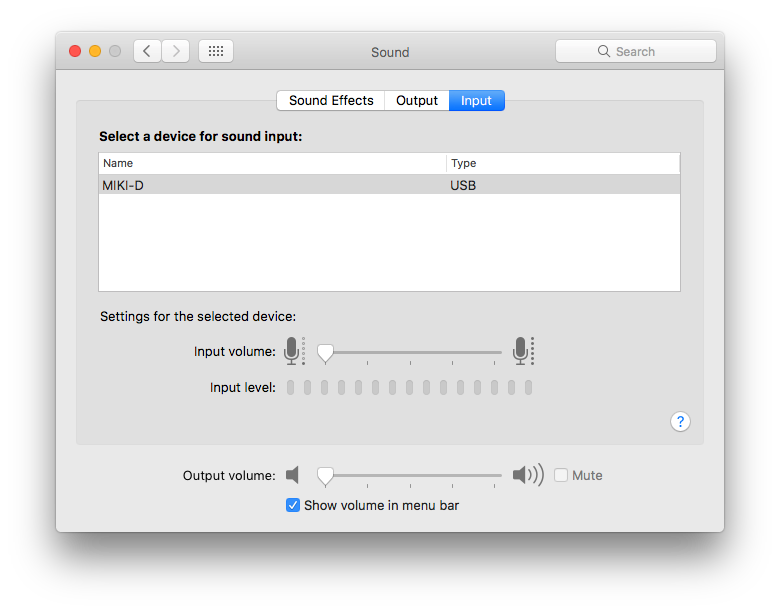
- In the Sound panel click the Ouput tab.
- Choose MIKI-D
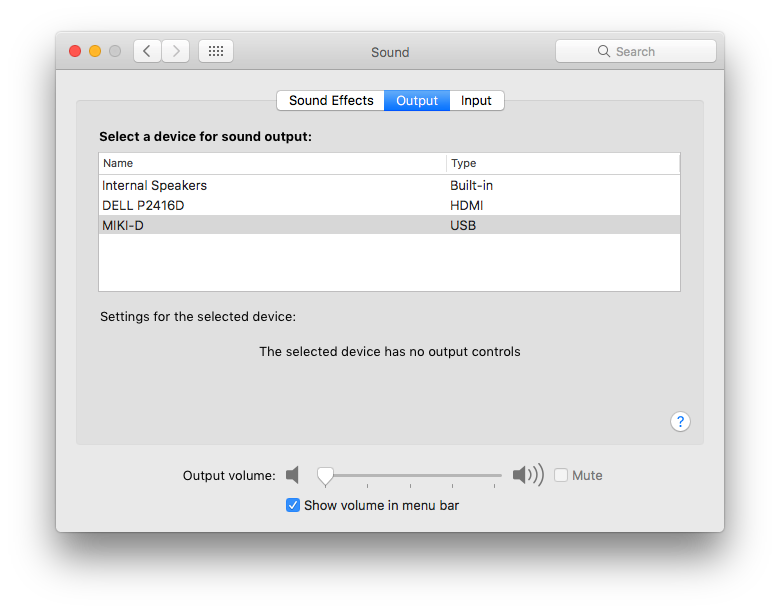
- Close the Sound preferences. You are ready to use the MIKI-D interface.
Use the Audio MIDI Setup to change the settings of the MIKI-D interface
- Open the Applications folder and then the Utilities folder.
- Double click to open Audio MIDI setup.
- Select MIKI-D input from the left side of the panel.
- The sample rate and the bit-depth can be chosen. Preferred values are 48000,0 Hz and 1ch-24bit Integer.

- Select MIKI-D output from the left side of the panel.
- The sample rate and the bit-depth can be chosen. Preferred values are 48000,0 Hz and 2ch-24bit Integer.
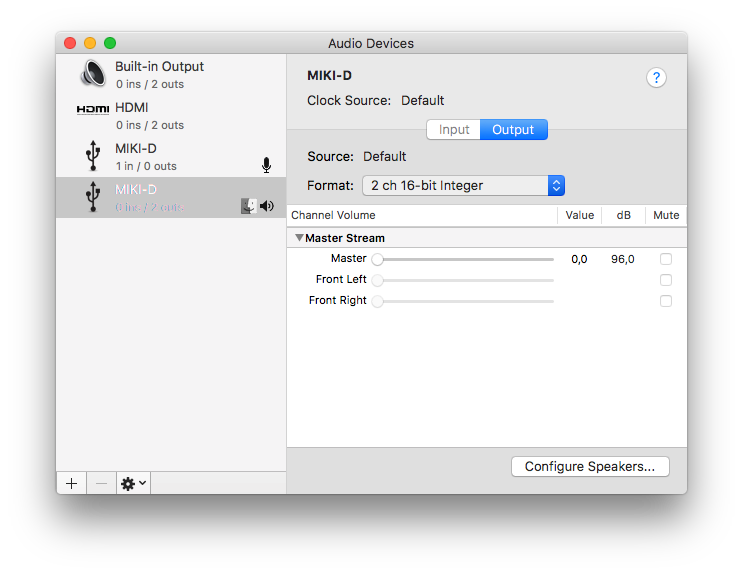
Setting-up for Apple iOS
The MIKI-D interface with USB-A connector will work with Apple’s mobile hand-held devices. In order to connect the MIKI-D to an iPhone or iPad and broadcast/record, an Apple “Lightning to USB Camera Adapter” or “Lightning to USB 3 Camera Adapter” is required. For more info, visit http://www. apple.com/shop.
The MIKI-D with USB-C connector will work on the iPad Pro with USB-C port, out of the box, no adapter is required.
- Plug the Camera Adapter/Connector into your Apple mobile device.
- Plug the MIKI-D into the Camera Adaptor/Connector’s USB port.
- Select your desired mobile broadcast/record application.
- Adjust microphone volume to desired level (not valid when you lock your MIKI-D level, see MIKI-D Control description).
Setting-up in Windows
Use the Control Panel Sound settings to receive audio from MIKI-D, while sending sound to the MIKI-D Headphone output:
- Insert the MIKI-D into your computer’s USB port.
- Go to Start menu and launch Control Panel.
- Open Hardware and Sound panel.
- Select Playback.
- Select the MIKI-D as the Headphone device. Ensure it is the Default Device.
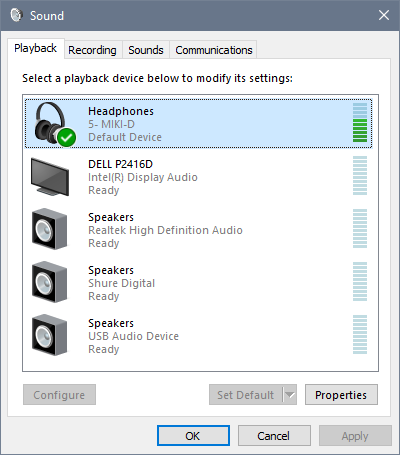
- Select Recording
- Select the MIKI-D as the Microphone device. Ensure it is the Default Device.
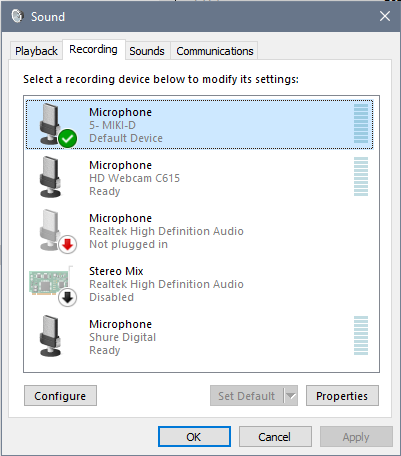
To setup advanced settings:
- Click the Headphones Properties button for more setup options.
- Click the Advanced tab. Use the drop-down menu to choose the bit depth and sample rate. Preferred value is 2 channel, 24-bit, 48000 Hz.
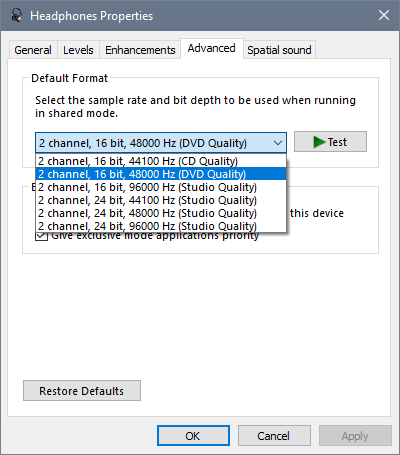
- Click the Microphone Properties button for more setup options.
- Click the Advanced tab. Use the drop-down menu to choose the bit depth and sample rate. Preferred value is 1 channel, 24-bit, 48000 Hz.

Setting-up for Android
The MIKI-D interface will work with Android 6.0 and up, devices that support OTG. For the new Android devices with USB-C connector you can connect the MIKI-D type C directly.
- Plug in the MIKI-D type C directly in the mobile device USB-C port.
- Select your desired mobile broadcast/record application.
- Adjust microphone volume to desired level (not valid when you lock your MIKI-D level, see MIKI-D Control description).
For the older Android devices with microUSB you can connect the MIKI-D type A with an OTG cable compatible with your device.
- Plug the OTG Adapter/Connector into your mobile device.
- Plug the MIKI-D type A into the OTG cable’s USB port.
- Select your desired mobile broadcast/record application.
- Adjust microphone volume to desired level (not valid when you lock your MIKI-D level, see MIKI-D Control description).
